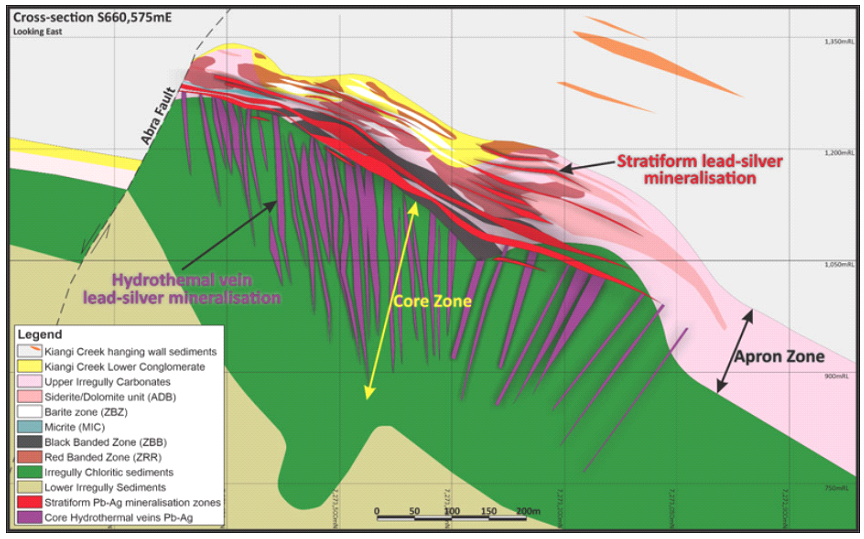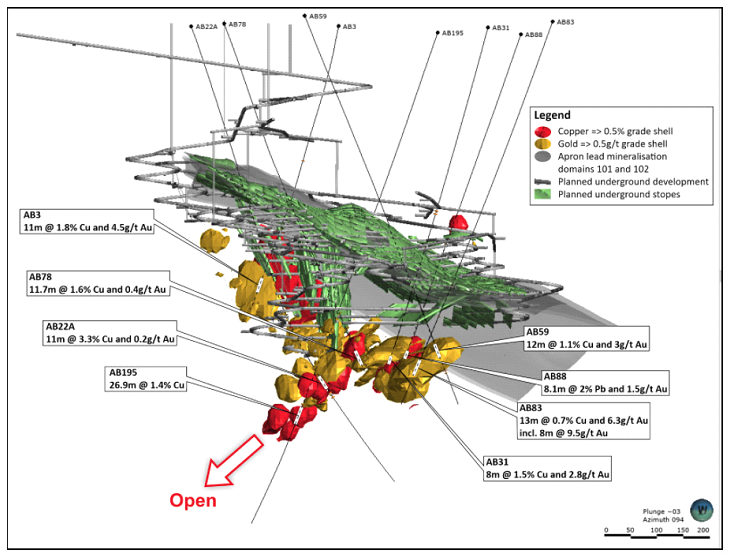Mineral Resources
Abra is a world class lead-silver deposit. The mineralisation commences at 230 metres below surface and it is characterised by two main zones, the Apron Zone, a high-grade stratiform mineralisation domain and the Core Zone, which underlies the Apron Zone and is a sub-vertical high-grade lead-silver mineralisation feeder system.
The FS completed in 2019 mined a selective portion of the total resource with the majority of the production coming from the Apron Zone. The FS mined and processed 16.3Mt containing 8.1% lead and 20g/t silver. The latest Mineral Resource Estimate (MRE) for Abra is 33.4Mt containing 7.1% lead and 17 g/t silver. Since 2017, 4 separate diamond drilling programs have been completed by the company providing data for four separate MRE revisions.
 Picture showing the various zones of the Abra deposit.
Picture showing the various zones of the Abra deposit.
The Apron Zone of the Abra deposit is characterised by multiple stacked up lodes of high-grade lead and silver mineralisation oriented parallel to the overall stratigraphy, it accounts for 81% of the current Indicated Mineral Resource. The Core Zone is formed by high-grade and coarse-grained galena mineralisation comprised by sheeted veins located immediately below the Apron Zone.
Copper and gold mineralisation also occurs at depth within the Abra deposit with its economic potential to be evaluated during future drilling programs.
 Picture showing the copper-gold zone below the Abra deposit.
Picture showing the copper-gold zone below the Abra deposit.
In July 2023, AMPL concluded the update of the Abra MRE with a total global resource of 33.4Mt at 7.1% lead and 17g/t silver.
Abra JORC Mineral Resource estimate1, 2
| Resource classification |
Tonnes (Mt) |
Lead grade (%) |
Silver grade (g/t) |
| Measured |
0.3 |
7.3 |
32 |
| Indicated |
16.2 |
7.3 |
19 |
| Inferred |
16.9 |
6.9 |
15 |
| Total |
33.4 |
7.1 |
17 |
Notes:
1. See Galena ASX announcement of 07 August 2023.
2. Calculated using ordinary kriging method and a 5.0% lead cut-off grade. Tonnages are rounded to the nearest 100,000t, lead grades to one decimal place and silver to the nearest gram. Rounding errors may occur when using the above figures.



